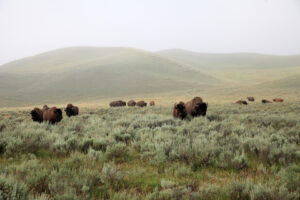 There is a new exhibit at the Museum of Modern Art (MoMA) “Foreclosed: Rehousing the American Dream.” The show, in which five teams of architects have been rethinking housing in American cities and suburbs in light of the foreclosure crisis, has been getting a great deal of press recently, including the New York Times, New York magazine and a feature on NPR. “Foreclosed” is the second program in MoMA’s “Issues in Contemporary Architecture” series, which started in 2009 with “Rising Currents,” which addressed New York City’s rising water levels. http://nymag.com/homedesign/urbanliving/2011/moma-2011-10/.
There is a new exhibit at the Museum of Modern Art (MoMA) “Foreclosed: Rehousing the American Dream.” The show, in which five teams of architects have been rethinking housing in American cities and suburbs in light of the foreclosure crisis, has been getting a great deal of press recently, including the New York Times, New York magazine and a feature on NPR. “Foreclosed” is the second program in MoMA’s “Issues in Contemporary Architecture” series, which started in 2009 with “Rising Currents,” which addressed New York City’s rising water levels. http://nymag.com/homedesign/urbanliving/2011/moma-2011-10/.
One of the entries (“misregistration’) includes the concept of ‘rewilding’ what’s left of suburbia. Rewilding is the idea that we should set aside vast amounts of unproductive land to allow large predators to reinhabitat North America. This idea has a lot of merit, given that large predators are a keystone species regulating the health and resiliency of our ecosystems. This idea makes a lot of sense given the population shift toward urban areas and the need to safeguard ecosystem services (healthy soils, clean air, fresh water, food production, flood control, etc.) for future generations.
MoMA and The Buell Center invited a series of team participants and observers who attended workshops for the exhibition to reflect on the project. Here are thoughts from Alexander Felson, a member of Andrew Zago’s team.
What is most interesting, and hauntingly familiar, is the ecologist’s critique of the final proposal:
“However, in the course of the translation of these strategies into a design aesthetic, a sustained process for facilitating input from the ecologist was never fully developed or attempted, with mixed results in the extent to which the architect was able to effectively capture the ecological concepts. Consequently, while the final proposal of misregistration provides a compelling aesthetic, its actual ecological functionality remains open to question.”
We see this time and again, where some sort of abstract design aesthetic is forced onto the landscape, marginalizing or worse yet, ignoring the basic tenants of ecology, and then championed in the name of ‘sustainability’. Once again, it goes to show that many architects (and landscape architects) talk a good talk about ecological issues but rarely understand the science and almost certainly don’t know how to fully integrate sound ecological principles into their work. The two are not mutually exclusive.
Further Reading
Meet Assistant Construction Project Team Leader Bryan SullivanMeet Conservation Biologist Nolan Schillerstrom
Get to know Allyson Gibson, Biohabitats Extern
Get to Know Graphic Designer Joey Marshall
Evolution: A New Leadership Team for Biohabitats
More From This Author
Economy’s effect on sustainable development? No easy question.Integrating Traditional Ecological Knowledge & Western Science
Landscape Urbanism vs. New Urbanism: Who cares? Both are missing the point!
“Will animals escape?” vs. “The need for species adaptation” – It’s all in the way you say it.
Population explosion continues

